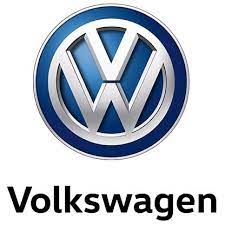To develop applications faster and to deliver across hybrid cloud environments, enterprises are using micro services and containers . To make everything work they need the right platform, that is when Redhat Openshift comes into play.
Openshift has 4 different flavours
- Origin — The original upstream open source project from which all other models are derived
- Openshift Online — This is Redhats publicly hosted version of Openshift Origin available for application development and hosting purposes
- Openshift dedicated — Its a managed private cluster on cloud platforms like AWS , Google
- Openshift Enterprise — Its the on-premise private paas offering of Openshift
Openshift is a platform that allows you to run containerized applications and workloads and is powered by Kubernetes. The Kubernetes Platform provides a trusted platform for the on premises , multi cloud and hybrid deployments as per enterprises demands.
With a streamlined management Redhat Openshift ,
- Empowers development teams to build and deploy new applications. They have has access to — validated images and solutions from 100’s of partners . It also supports in Tooling that the developers prefer like jenkins, java, python and so on, to build their next app
- It Helps operations team to provision, manage and scale a kubernetes platform. The Operations team is given visibility into deployments with built in log in and monitoring
When its ready to launch , Service Mesh Stream Lines deploys making sure that each services can communicate with each other , so that the developers could focus on coding . Now that you got an idea of what Openshift is lets jump into a case study where Volkswagen has implemented Redhat Openshift in their enterprise
VOLKSWAGEN AND REDHAT OPENSHIFT
The Biggest Automotive industry Volkswagen has implemented Redhat Openshift.

To ensure that the cars are safe a new way of testing was need .Integration testing is one of the complex task in automotive industry. The electronics system in a car consists of server components such as sensor actuators and electronic control units. They consists of software components which interacts with each other . They communicate through different bus technologies like Ken, Ethernet and so on. These electronics system needs to pass an integration testing for each combination of components, for each equipment line of the car , for each model and for every version of software in the car.

The more capabilities those systems gain in terms of over control of the car, the more test cases were needed . A virtual car with a virtual driver is built and run on an virtual environment for testing. The test subject would be the software component of a control unit or the control unit itself or the complete system which represents the customers function. So in the end of the integration test there is an approval that the car is reliable, safe and proper for the customers. This was reliable but it takes a long time. In terms of exponential growth they needed an upgrade for the long run.
This is when Volkswagen found out about the importance of Redhat Openshift and the idea of containers came into play.
JOURNEY TO REDHAT OPENSHIT
Their goal was fully automtion and virtual testing , allowing to test functions earlier in trail development . Using Redhat Openshift platform they were able to test and validate new features for self driven cars, through a combination of software and hardware systems by simulating thousands of testing environments and scenarios for specific car functions such as autonomous driving in highways or even autonomous car parking. Along with vehicle software Openshift container technology helped them to put all the necessary tools, applications and simulation components in logical compounds . This helped them to run large quantities of test cases in parallel over a short amount of time .
A Virtual Test Environment(VTE) was created
- Openshift Native Architecture — Kubernetes at the core
- Temporal, Short Lived Environments — VTE’s created for a certain period of time and then deleted
- Asynchronous, Event Driven — VTE’s Pull tests from Central System when ready
- Isolated — SDN ensures network isolation for multicast discovery
- Auto Healing — Possible to restart VTE’s in case of failure
- Standards and API driven — OpenAPI, AMQP, EIP
Redhat Openshift container has been a vital to their success and as a result Volkswagen has experienced transformational outcomes allowing them to work and think in new ways by developing, testing and building codes.
So what are you waiting for take the first step to success by learning about Openshift with CubenSquare.


